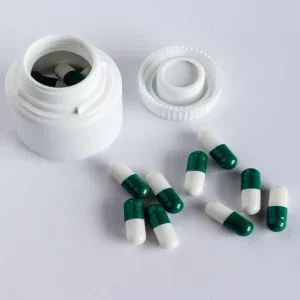
In an age where data is as valuable as gold, the pharmaceutical industry has emerged as a prime target for cybercriminals. The stakes are particularly high in this sector due to the sensitive nature of the data involved, ranging from patient information to proprietary research and development (R&D) data. This article delves into the multifaceted issues of cyber insecurity within the pharmaceutical industry, examining the primary threats, the implications of breaches, and best practices for enhancing cybersecurity.
The landscape of cyber threats in the pharmaceutical industry
The nature of cyber threats
The pharmaceutical industry faces a broad spectrum of cyber threats, each with potentially devastating consequences:
- Ransomware Attacks: These attacks involve cybercriminals encrypting a company’s data and demanding a ransom for its release. In 2020, the healthcare sector saw a 123% increase in ransomware attacks, with the pharmaceutical industry being a significant target.
- Data Breaches: The theft of sensitive data, including patient records, intellectual property (IP), and clinical trial data, can have severe repercussions. For instance, the breach of clinical trial data can lead to the loss of years of research and millions of dollars.
- Phishing and Social Engineering: Cybercriminals use phishing emails and other social engineering tactics to deceive employees into providing access to confidential information or installing malware.
- Insider Threats: Employees or other insiders with access to sensitive information can intentionally or unintentionally compromise data security. This threat is particularly concerning given the high value of pharmaceutical IP.
Notable cyber incidents in the pharmaceutical sector
Several high-profile cyber incidents have highlighted the vulnerabilities within the pharmaceutical industry:
- Merck Attack (2017): The NotPetya malware attack on Merck resulted in over $870 million in damages, affecting production and distribution systems.
- Pfizer Data Breach (2020): Sensitive medical information related to the COVID-19 vaccine trials was exposed, potentially undermining public trust and compromising competitive advantage.
- Hacking of COVID-19 Vaccine Data: Multiple reports have indicated attempts by state-sponsored hackers to steal COVID-19 vaccine research from pharmaceutical companies.
The implications of cyber insecurity
Financial Costs
Cyberattacks can lead to significant financial losses. These costs can stem from multiple sources, including:
- Ransom Payments: While many companies choose not to pay ransoms, those that do often find the costs running into millions of dollars.
- Operational Disruptions: Attacks can halt production lines, disrupt supply chains, and delay product launches, leading to substantial revenue losses.
- Regulatory Fines: Data breaches can result in hefty fines from regulatory bodies. For instance, the European Union’s General Data Protection Regulation (GDPR) can impose fines of up to €20 million or 4% of global turnover, whichever is higher.
Reputational Damage
A cyber breach can significantly tarnish a pharmaceutical company’s reputation. Trust is paramount in this industry, where patients rely on companies for life-saving medications and treatments. A loss of trust can result in decreased sales and long-term brand damage.
Loss of Intellectual Property
The theft of IP, including R&D data, can be particularly devastating. Competitors or malicious actors could use stolen information to replicate or undermine innovative treatments, eroding a company’s competitive edge and leading to significant revenue losses.
Legal and Regulatory Ramifications
Pharmaceutical companies must comply with a myriad of regulations concerning data protection and patient privacy. A cyber breach can lead to complex legal battles, regulatory fines, and a requirement to implement extensive and costly remediation measures.
Enhancing cybersecurity in the pharmaceutical industry
Implementing Robust Cybersecurity Measures
Pharmaceutical companies must adopt a multi-layered approach to cybersecurity, incorporating both technological solutions and employee training:
- Advanced Encryption: Encrypting sensitive data both at rest and in transit ensures that even if data is intercepted or stolen, it cannot be easily read or used by unauthorised parties.
- Regular Security Audits: Conducting regular audits of IT systems can help identify and rectify vulnerabilities before they can be exploited by cybercriminals.
- Multi-Factor Authentication (MFA): Implementing MFA adds an additional layer of security, making it more difficult for unauthorised users to gain access to systems and data.
- Intrusion Detection Systems (IDS): IDS can help identify potential threats in real-time, enabling swift action to mitigate potential breaches.
Employee training and awareness
Human error remains one of the leading causes of cyber breaches. Therefore, comprehensive training programmes are crucial:
- Regular Training Sessions: Conducting frequent cybersecurity training sessions can help employees recognise phishing attempts and other common cyber threats.
- Phishing Simulations: Running simulated phishing attacks can help employees learn to identify and respond to real-world threats more effectively.
- Clear Security Policies: Establishing and communicating clear cybersecurity policies can ensure that employees understand their roles and responsibilities in maintaining data security.
Collaboration with external experts
Given the complex and evolving nature of cyber threats, pharmaceutical companies should consider collaborating with external cybersecurity experts:
- Managed Security Service Providers (MSSPs): MSSPs can provide comprehensive cybersecurity services, including monitoring, threat detection, and incident response.
- Industry Collaboration: Sharing information about threats and best practices with other companies in the pharmaceutical industry can enhance collective security.
Regulatory compliance and best practices
Compliance with regulatory standards is not just a legal requirement but also a critical aspect of cybersecurity:
- GDPR and CCPA Compliance: Ensuring compliance with regulations like the GDPR and the California Consumer Privacy Act (CCPA) is essential for protecting patient data and avoiding hefty fines.
- Cybersecurity Frameworks: Adopting industry-standard frameworks, such as the NIST Cybersecurity Framework, can provide a structured approach to managing cybersecurity risks.
Incident response planning
Preparing for potential cyber incidents is just as important as preventing them. A well-defined incident response plan can minimise damage and facilitate quicker recovery:
- Establishing a Response Team: Creating a dedicated incident response team ensures that there are designated individuals responsible for managing and mitigating cyber incidents.
- Regular Drills and Simulations: Conducting regular drills and simulations can help ensure that the response team is prepared to act swiftly and effectively in the event of a breach.
- Post-Incident Analysis: Analysing incidents after they occur can provide valuable insights into vulnerabilities and inform improvements in security measures.
The future of cybersecurity in the pharmaceutical industry
As cyber threats continue to evolve, the pharmaceutical industry must remain vigilant and proactive in its approach to cybersecurity. Emerging technologies, such as artificial intelligence (AI) and machine learning (ML), hold promise for enhancing cybersecurity efforts:
- AI and ML for Threat Detection: These technologies can analyse vast amounts of data to identify patterns and anomalies indicative of cyber threats, enabling more proactive and precise threat detection.
- Blockchain for Data Security: Blockchain technology can provide a secure and transparent way to manage and share data, reducing the risk of tampering and unauthorised access.
Collaboration and information sharing
In addition to technological advancements, fostering a culture of collaboration and information sharing within the industry and with governmental and regulatory bodies can enhance cybersecurity efforts:
- Public-Private Partnerships: Collaborating with government agencies can provide access to threat intelligence and resources that can enhance cybersecurity defences.
- Industry Consortia: Joining industry consortia dedicated to cybersecurity can facilitate the sharing of best practices and threat intelligence among pharmaceutical companies.
Conclusion
The pharmaceutical industry, with its wealth of sensitive data and critical research, is an attractive target for cybercriminals. The consequences of cyber breaches in this sector are severe, ranging from financial losses and reputational damage to the theft of valuable intellectual property. To mitigate these risks, pharmaceutical companies must adopt a multi-faceted approach to cybersecurity, encompassing advanced technological solutions, comprehensive employee training, and collaboration with external experts.
By staying vigilant and proactive, the pharmaceutical industry can better protect itself against the ever-evolving landscape of cyber threats, ensuring the security of sensitive data and the continuity of vital research and development efforts. In an era where data security is paramount, a robust cybersecurity strategy is not just a necessity but a critical component of the industry’s ongoing success and innovation.






